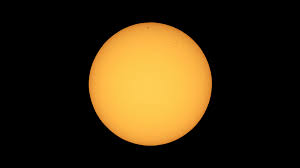Scientists estimate that our Sunlight has to do with 4.6 billion years of age. They’re remarkably certain regarding that number. The short answer is “a great deal of science as well as math”, yet I sense you’re not here for the short answer We in fact contend at our disposal with a number of independent lines of proof that all provide the very same solution.
Similar to a great prosecution making use of eyewitnesses, fingerprints, as well as an array of tools to pin a murder on a suspect, scientists like to make use of several methods to hold up a single response. The very first method is to search for the oldest point in the solar system.
Is The Sun A Star
The Sun is a star It is the source of light, heat, and energy for the solar system and is essential for life on Earth. The Sun is made up of mostly hydrogen and helium, and it is a nearly spherical ball of hot plasma. Yet we see billions upon billions of celebrities around us.
A few of those celebrities were birthed recently, while others were born long ago. So we have photos of various stars in different phases of their lives. Envision takes a photo of a million different individuals, entirely randomly.
How Far Away Is The Sun
The very first method is to search for the oldest point in the solar system. The technique researchers use is called nucleocosmochronology, and when you’re done unpacking the Greek prefixes.
By researching millions of celebrities as well as using our expertise in physics especially the physics of nuclear fusion in outstanding cores, astronomers have created a kind of map.
Age Of The Sun
You’ll find that this technique includes making use of nuclear radioactivity to figure out the age of points preceding. One more, completely separate, strategy to gauge the age of the Sun entails recognizing stellar life cycles.
Stars live for so long that we can’t possibly adhere to a single celebrity with its entire life span.
If you give them a celebrity with a details mass and brightness, they can approximate its age. Those 2 and other methods all point parallel a Sunlight that’s just over 4 and a fifty percent billion years old.
The Sun’s Lifespan
Today, we are around midway through the phase called the Key Series of our Sun. Eventually, the Sun’s supply of these elements will be tired and also the Key Sequence will certainly involve an end, however, that lies around 5.4 billion years.
As the Sunlight burns it raises very progressively in illumination and size. The size of the Sun is additionally boosting extremely slowly throughout this phase of the Sunlight’s life.
Lifetime Of The Sun
The lifetime of the sun is going to be a little bit also bright for human convenience. While the Sun is presently fusing hydrogen into helium and launching power right into the area, ultimately it will certainly lack points to shed in its core.
When the Sun lacks the elements fueling its reaction it starts the last of its life. In about 5.4 billion years the Sun will certainly lack hydrogen to shed, although it will certainly still have helium at its core. During this phase of its life, the Sunlight will increase as well as lighten up as it comes to be a red giant.
As soon as core hydrogen is diminished, the sunlight will increase in dimension and also brightness throughout 500,000 years. Then the following 500,000 years will certainly see it broaden much more rapidly, enhancing to 200 times its existing size, a span that will engulf Mercury, Venus, and also our dear Planet.
This large Suntime will certainly also be 1000 times brighter than it is today, although the temperature level of this Red Giant will certainly approach our present Suntime. Since our Sun is not hot enough to explode in a supernova, it will rather undergo a period of thermal pulsing where its size and illumination will differ exceptionally.
Eventually, the Suntime will be minimized to a core, that will certainly include regarding 54% of the Sunlight’s current mass, the remainder of its mass spread right into the cosmos as a planetary nebula.







